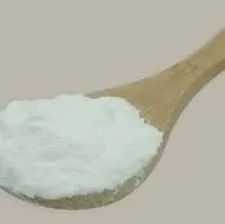Understanding Pentoxifylline Uses, Mechanism, and Benefits
Pentoxifylline, commonly referred to by its brand name Trental, is a medication primarily used to improve blood flow in conditions characterized by poor circulation. Originally developed as a treatment for intermittent claudication—a condition marked by pain in the legs due to inadequate blood supply—pentoxifylline has found broader applications in various medical conditions. This article aims to delve into the uses, mechanisms, and benefits of pentoxifylline, as well as potential side effects and considerations for its use.
Mechanism of Action
Pentoxifylline belongs to a class of drugs known as xanthines. Its primary mechanism involves decreasing the viscosity of blood and increasing its fluidity. By inhibiting phosphodiesterase, pentoxifylline elevates levels of cyclic adenosine monophosphate (cAMP) in red blood cells. This biochemical change leads to a decrease in the rigidity of red blood cells and enhances their ability to deform. Consequently, pentoxifylline improves microcirculation and oxygen delivery to tissues, which is crucial in conditions where blood flow is compromised.
Clinical Uses
The most common indication for pentoxifylline is in the treatment of intermittent claudication due to peripheral artery disease (PAD). Patients suffering from PAD often experience pain, cramping, or weakness in the legs during physical activities due to reduced blood flow. By improving circulation, pentoxifylline can help alleviate these symptoms and enhance walking distance in affected individuals.
Apart from its primary use in peripheral vascular conditions, pentoxifylline has been explored in various other medical contexts. Research has suggested its efficacy in treating diabetic foot ulcers, enhancing wound healing by promoting microcirculation. Additionally, its anti-inflammatory properties have made it a potential candidate in managing chronic lung diseases, particularly in patients with chronic obstructive pulmonary disease (COPD). Recent studies also indicate that pentoxifylline may have benefits in treating certain liver diseases, notably in reducing fibrosis in patients with hepatitis C.
Potential Benefits
apo pentoxifylline

The benefits of pentoxifylline extend beyond improved blood flow and symptomatic relief. Its ability to enhance oxygen delivery to tissues can significantly impact the quality of life for patients suffering from chronic circulatory issues. Furthermore, its role in promoting wound healing is particularly important in diabetic patients, where ulcers can lead to severe complications if left untreated.
Additionally, pentoxifylline is generally well-tolerated, with a relatively low incidence of adverse effects compared to other systemic therapies. This factor contributes to its favorable risk-benefit profile in appropriate clinical settings.
Side Effects and Considerations
Despite its benefits, pentoxifylline is not devoid of side effects. Common adverse effects include gastrointestinal disturbances, such as nausea and dyspepsia. More severe but rare side effects can include bleeding tendencies and hypotension, especially in patients on anticoagulants or with existing low blood pressure. Patients with a history of arrhythmias and those who are pregnant or breastfeeding should use pentoxifylline with caution and under medical supervision.
Moreover, its effectiveness can vary based on individual patient characteristics, underlying health conditions, and concurrent medications. Therefore, a thorough medical evaluation is essential before initiating therapy with pentoxifylline.
Conclusion
Pentoxifylline is a valuable medication in the management of various conditions related to poor blood circulation, with proven benefits in improving symptoms of intermittent claudication and promoting wound healing. Understanding its mechanism of action and appropriate clinical applications can help healthcare professionals make informed decisions in treating patients with vascular-related issues. As with any medication, careful consideration of individual patient profiles and potential side effects is crucial to maximizing its therapeutic benefits. As research continues to unfold, pentoxifylline may pave the way for innovative treatments in the realm of vascular medicine and beyond.

